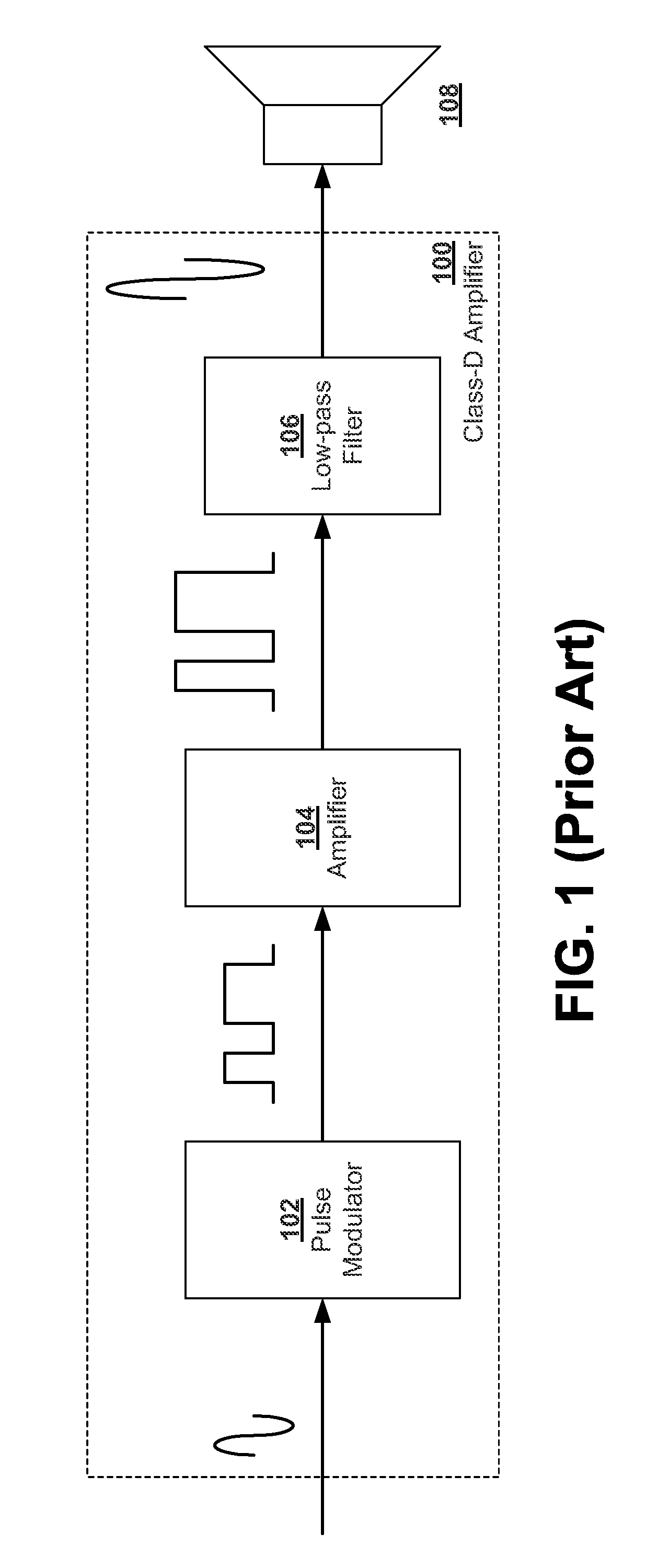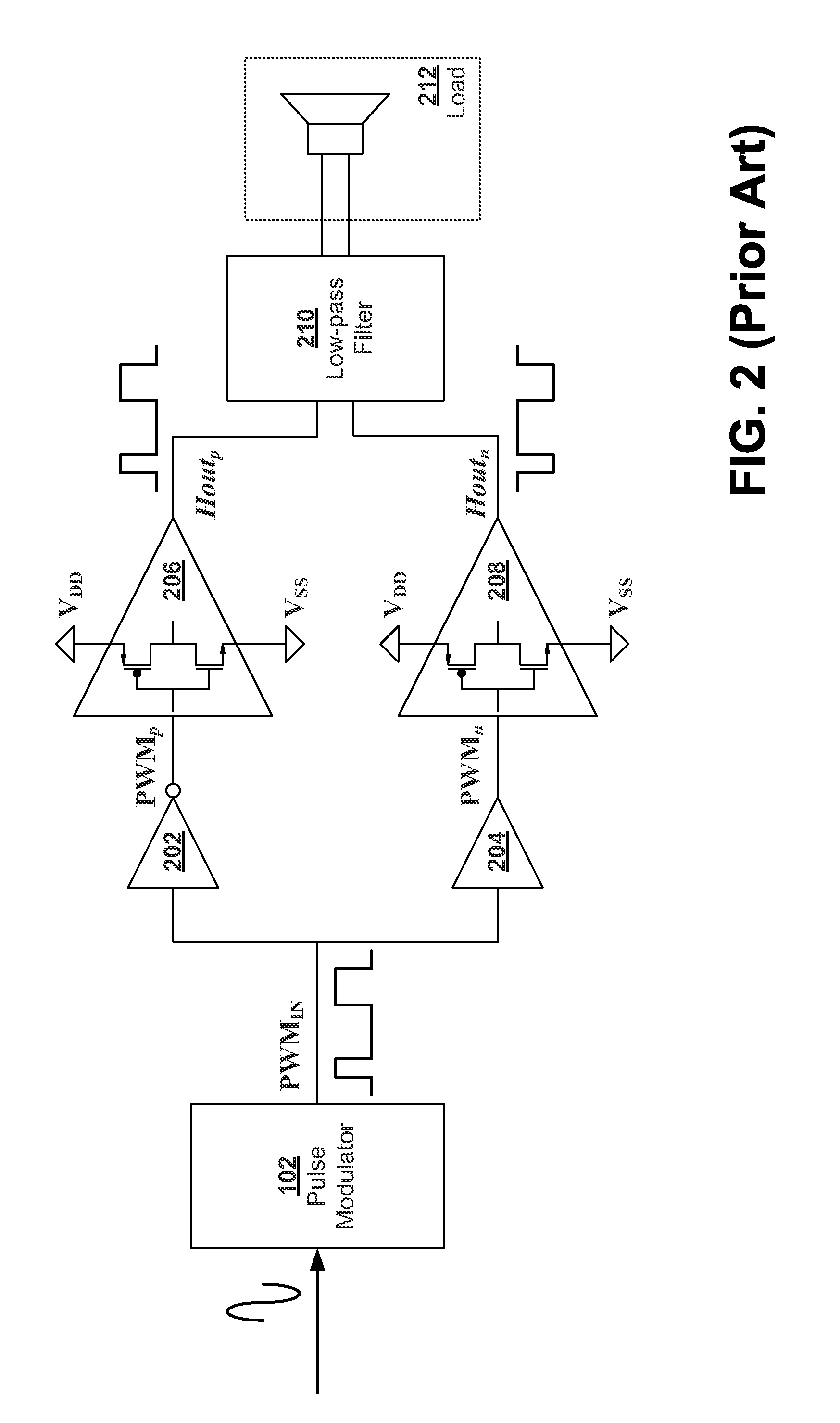Noise-Shaped Scrambler for Reduced Out-of-Band Common-Mode Interference
a noise-shaped scrambler and common-mode interference technology, which is applied in the direction of pulse conversion, amplifiers with semiconductor devices/discharge tubes, instruments, etc., can solve the problems of large load current flowing, large load loss, and fundamental drawbacks
- Summary
- Abstract
- Description
- Claims
- Application Information
AI Technical Summary
Benefits of technology
Problems solved by technology
Method used
Image
Examples
Embodiment Construction
[0048]A detailed description of embodiments of the present invention is presented below. While the disclosure will be described in connection with these drawings, there is no intent to limit it to the embodiment or embodiments disclosed herein. On the contrary, the intent is to cover all alternatives, modifications and equivalents, included within the spirit and scope of the disclosure as defined by the appended claims.
[0049]FIG. 10 is a block diagram illustrating an embodiment of the present invention. The diagram is similar to a standard three-level PWM scheme shown in FIG. 3 except common-mode (CM) scrambler 1020 is inserted at the output of modulation circuit 1002. Like FIG. 3, modulation circuit 1002 generates two outputs PWMp and PWMn. CM scrambler 1020 receives the PWMp and PWMn as two inputs and scrambles them via control signal scramctrl to generate two scrambled output signals scramp and scramn which drive two half-bridge circuits 1008 and 1010 through buffers 1004 and 100...
PUM
 Login to View More
Login to View More Abstract
Description
Claims
Application Information
 Login to View More
Login to View More - R&D
- Intellectual Property
- Life Sciences
- Materials
- Tech Scout
- Unparalleled Data Quality
- Higher Quality Content
- 60% Fewer Hallucinations
Browse by: Latest US Patents, China's latest patents, Technical Efficacy Thesaurus, Application Domain, Technology Topic, Popular Technical Reports.
© 2025 PatSnap. All rights reserved.Legal|Privacy policy|Modern Slavery Act Transparency Statement|Sitemap|About US| Contact US: help@patsnap.com



